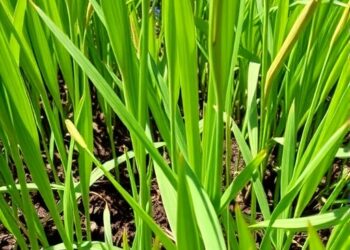A new paper published today in Molecular Biology and Evolution reveals that it’s not as straightforward as it might seem. Despite decades of data collection by the United Nations Office on Drugs and Crime (UNODC), which has been valuable to monitor changes in areas occupied by illegal coca plantations in South America, there is no reliable scientific method to distinguish between different types of coca plants.
A new paper published today in Molecular Biology and Evolution reveals that it’s not as straightforward as it might seem. Despite decades of data collection by the United Nations Office on Drugs and Crime (UNODC), which has been valuable to monitor changes in areas occupied by illegal coca plantations in South America, there is no reliable scientific method to distinguish between different types of coca plants.
South American coca plants have been essential to Andean and Amazonian communities for at least 8,000 years. It is within these communities that they are thought to have evolved from wild to domesticated coca plants. Their leaves, packed with many active compounds, just one of these being cocaine, play a central role in social organisation and cultural identity of many communities, as well as being used for medicinal treatments, as nutritional supplements, and everyday stimulants. However, the global demand for cocaine as a recreational and criminalised drug has driven intensive cultivation of coca and contributed to deforestation and conflict in the region.
Coca plants belong to the Erythroxylum genus, which includes over 270 species, mostly native to the American tropics. Two primary species of cultivated coca are Erythroxylum coca and Erythroxylum novogranatense, grown mostly in different regions of northwestern South America, but with some geographical overlap. Because of domestication, these plants were thought to have distinctive leaf shapes—smaller, rounder, and softer compared to wild species. Furthermore, the simple difference of rounder size in E. coca compared to E novogranatense has been used in attempts to identify species growing in plantations.
However, the study by researchers from the University of Portsmouth and Royal Botanic Gardens, Kew, with international partners including Universidad Distrital, Bogotá, Colombia reveals that leaf size and shape are not reliable identifiers. Researchers examined 1,163 leaf outlines from 342 digital herbarium specimens of wild and cultivated coca. The statistical analysis showed a significant overlap between the species and varieties, making it difficult to distinguish between them.
Dr Natalia A. S. Przelomska, Lecturer in Bioinformatics at the University of Portsmouth said: “Existing methods for botanical species identification, as I was fortunate to learn first-hand from Colombian botanist Prof. Rocío Cortés-B., can be very effective in their simplicity. However, they become increasingly unreliable once one is looking at the level of varieties. This is a problem because there is a need to distinguish varieties grown exclusively for the illegal cocaine market from those that have enduring cultural significance, a whole host of traditional uses and quite likely also untapped medicinal potential. These varieties have been under Indigenous stewardship for millennia, yet we now have evidence that plantations for cocaine production are encroaching on Indigenous territories.”
The researchers also showed there are distinctive traits of cultivated coca leaves: being rounder overall and narrower at the base. Although unreliable for identification, these are valuable clues regarding how these plants might have evolved in human cultivation.
The team also explored genetic relationships between coca plants, comparing their findings with existing classifications. They discovered that distinct coca varieties began evolving long before humans arrived in South America approximately 15,000 years ago.
Dr Przelomska highlights the importance of genetic techniques as a more accurate method for identifying and monitoring coca plants. “Genetic data offer a clearer picture, when complemented with looking at leaves and other plant organs that can be useful for recognising species, like parts of flowers. Importantly, our genetic work reveals a complex history of evolution of the coca plant, which explains why there are uncertainties in its classification system. Once these are clarified, it will be more feasible to develop cost-effective genetic methods for identification.”
Dr Oscar Alejandro Pérez-Escobar from Royal Botanic Gardens, Kew, a senior author who, along with Director of Science Alexandre Antonelli played a role in conceptualising this project says: “One of the primary objectives of our research is to propose a stable classification system and a comprehensive genetic database. This will enable us to confidently identify the different populations, varieties and species of cultivated coca and their wild relatives. Such a system is crucial for developing sustainable bioprospecting programs and the coca tree holds immense potential in this regard. But first, it is essential to separate the plant’s valuable attributes from its association with the recreational drug, reshaping its perception and highlighting its positive uses.”
The paper, “Morphometrics and phylogenomics of coca (Erythroxylum spp.) illuminate its reticulate evolution, with implications for taxonomy,” will be available on July 10th at https://academic.oup.com/mbe/article-lookup/doi/10.1093/molbev/msae114.
Journal
Molecular Biology and Evolution
Method of Research
Meta-analysis
Article Title
Morphometrics and Phylogenomics of Coca (Erythroxylum spp.) Illuminate Its Reticulate Evolution, With Implications for Taxonomy
Article Publication Date
10-Jul-2024




